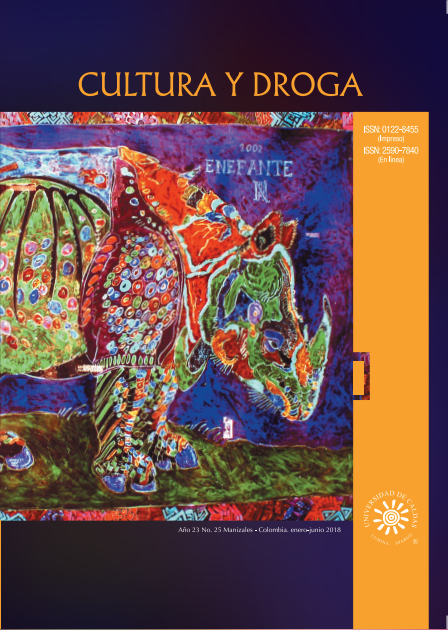Autores/as
Resumen
Mientras el Perú construyó la magnífica civilización Inca mediante la sabiduría proporcionada por la hoja de coca, se volvió luego el primer productor de derivados tóxicos de esta planta profanada. Hoy en día, de nuevo, la hoja de coca permite tratar la adicción a la cocaína y así lo demuestra la experiencia del Centro Takiwasi. Asimismo, se descubre hace unos decenios el uso sanador de la Ayahuasca y se produce en poco tiempo un uso explosivo por todo el mundo. ¿La desacralización acelerada de esta medicina llegará a los mismos extremos que el mal uso de la coca?; ¿qué nos puede enseñar el camino seguido con la coca en relación al uso de la Ayahuasca?; ¿a qué respondió el uso de la coca en Occidente y a qué responde el uso de la Ayahuasca hoy?
Palabras clave
Citas
Daniélou, A. (2008). Las divinidades alucinógenas. Revista Takiwasi, 1. Recuperado de https://takiwasi.wordpress.com/2008/03/08/13-alain-danielou-las-divinidadesalucinogenas1/.
Frecska, E., Bokor, P. and Winkelman, M. (2016). The Therapeutic Potentials of Ayahuasca: Possible Effects against Various Diseases of Civilization. Frontiers in Pharmacology, 7, 35.
Giove, R. (2002). La liana de los muertos al rescate de la vida, medicina tradicional amazónica en el tratamiento de las toxicomanías. Tarapoto, Perú: Takiwasi ediciones.
Guimarães dos Santos, R. (2013). Safety and Side Effects of Ayahuasca in Humans-An Overview Focusing on Developmental Toxicology. Journal of Psychoactive Drugs, 45 (1), 68-78.
Gumucio, J. (2008). La leyenda de la coca. La historia secreta de la hoja de coca y la cocaína. Caracas, Venezuela: Editorial El Perro y La Rana.
Labate, B. and Cavnar, C. (2014). Ayahuasca Shamanism in the Amazon and Beyond. Oxford, England: Oxford University Press.
Mabit, J. (1999). Ir y volver: el ritual como puerta entre los mundos, ejemplos en el shamanismo amazónico. Amazonía Peruana, XIII (26), 143-155.
Mabit, J. (2007). Ayahuasca in the treatment of addictions. En Winkelman, M.J. and Roberts, T. (Ed.), Hallucinogens and Health: New Evidence for Psychedelic Substances as Treatment. California, USA: Praeger Publishers.
Mabit, J. (2016). Le sorcier, le fou et la grâce: les archétypes sont-ils des esprits désacralisés ? Réflexion à partir du chamanisme amazonien. Recuperado de http://www.takiwasi.com/docs/arti_fra/Le_sorcier_le%20fou_et_la_grace_article_complet.pdf.
Morin, E. (2005). Introducción al pensamiento complejo. Barcelona, España: Gedisa.
Molnar, E. (2013). The responsible use of entheogens in the context of bioregionalism. European Journal of Ecopsychology, 4, 78-89.
Spangler, D. (1984). The Rebirth of the Sacred. London, England: Gateway Books.
Sotillos, S. (2013). Psychology and the Perennial Philosophy: Studies in Comparative Religion. Indiana, USA: World Wisdom.
Toolan, D. (1987). Facing West from California’s Shores: Jesuit’s Journey into New Age Consciousness. New York, USA: Crossroad Pub Co.
Verlinde, J.-M. (2014). Les impostures antichrétiennes. Paris, France: Presses Renaissance.

 PDF
PDF
 FLIP
FLIP





















